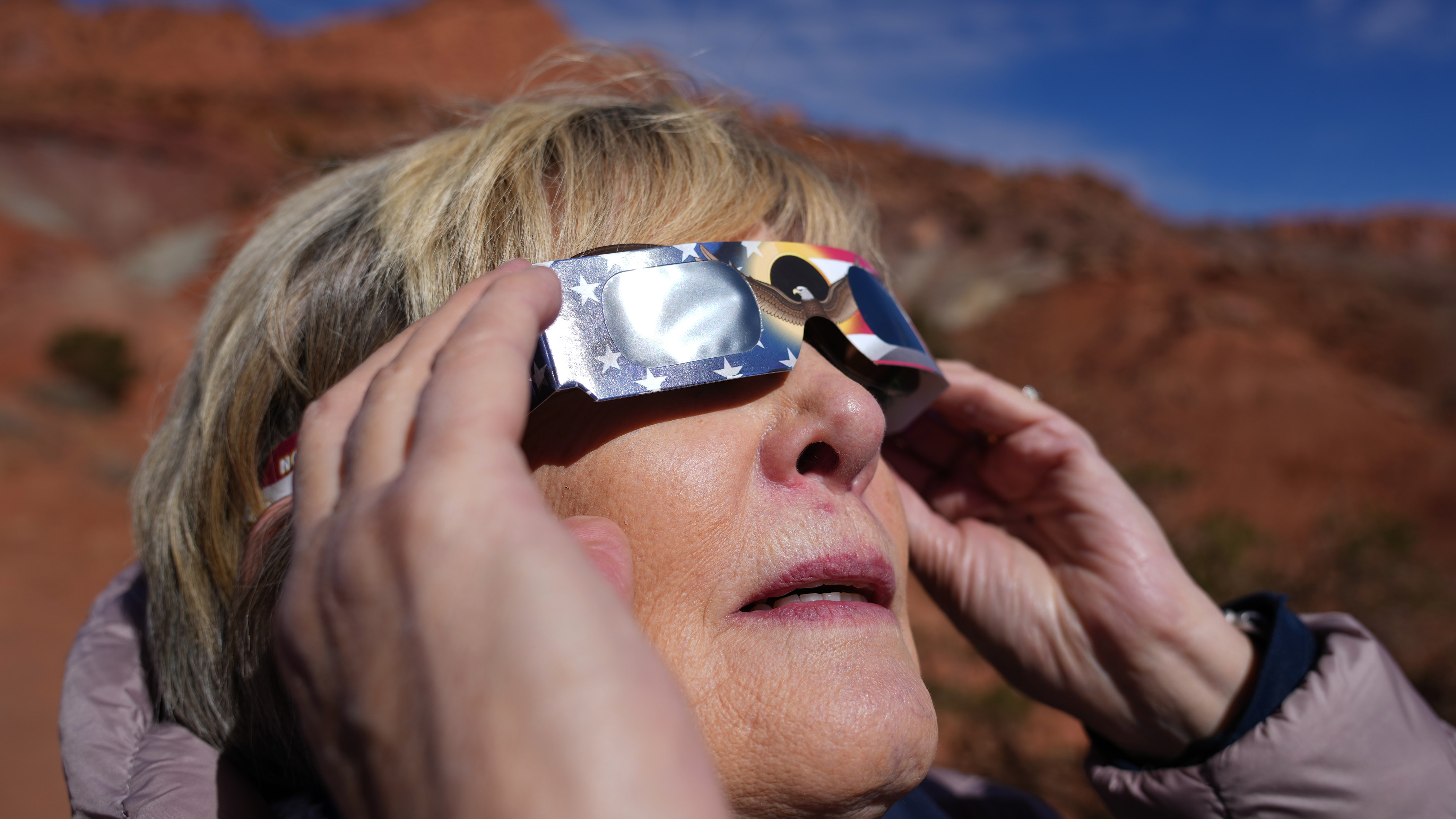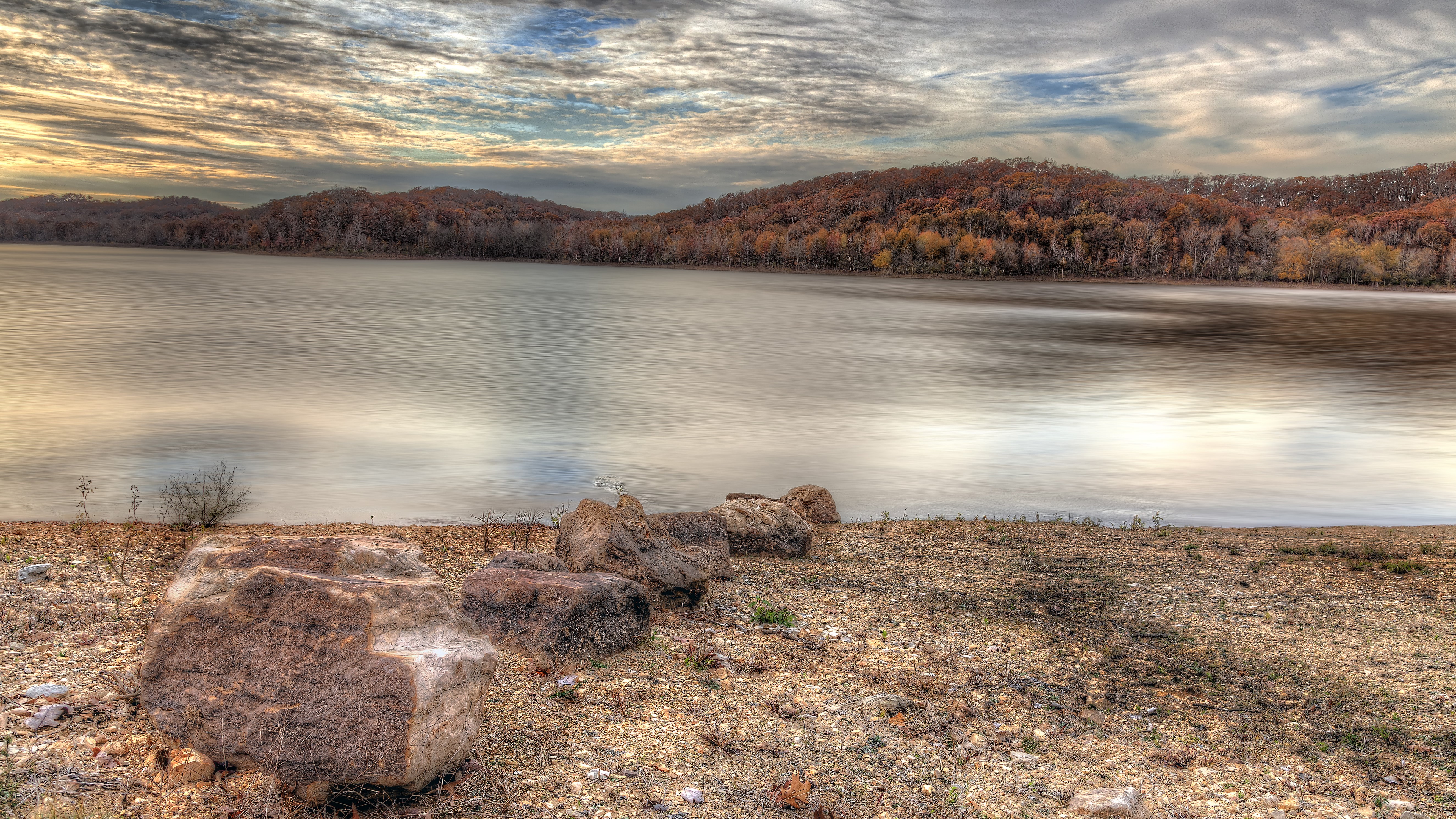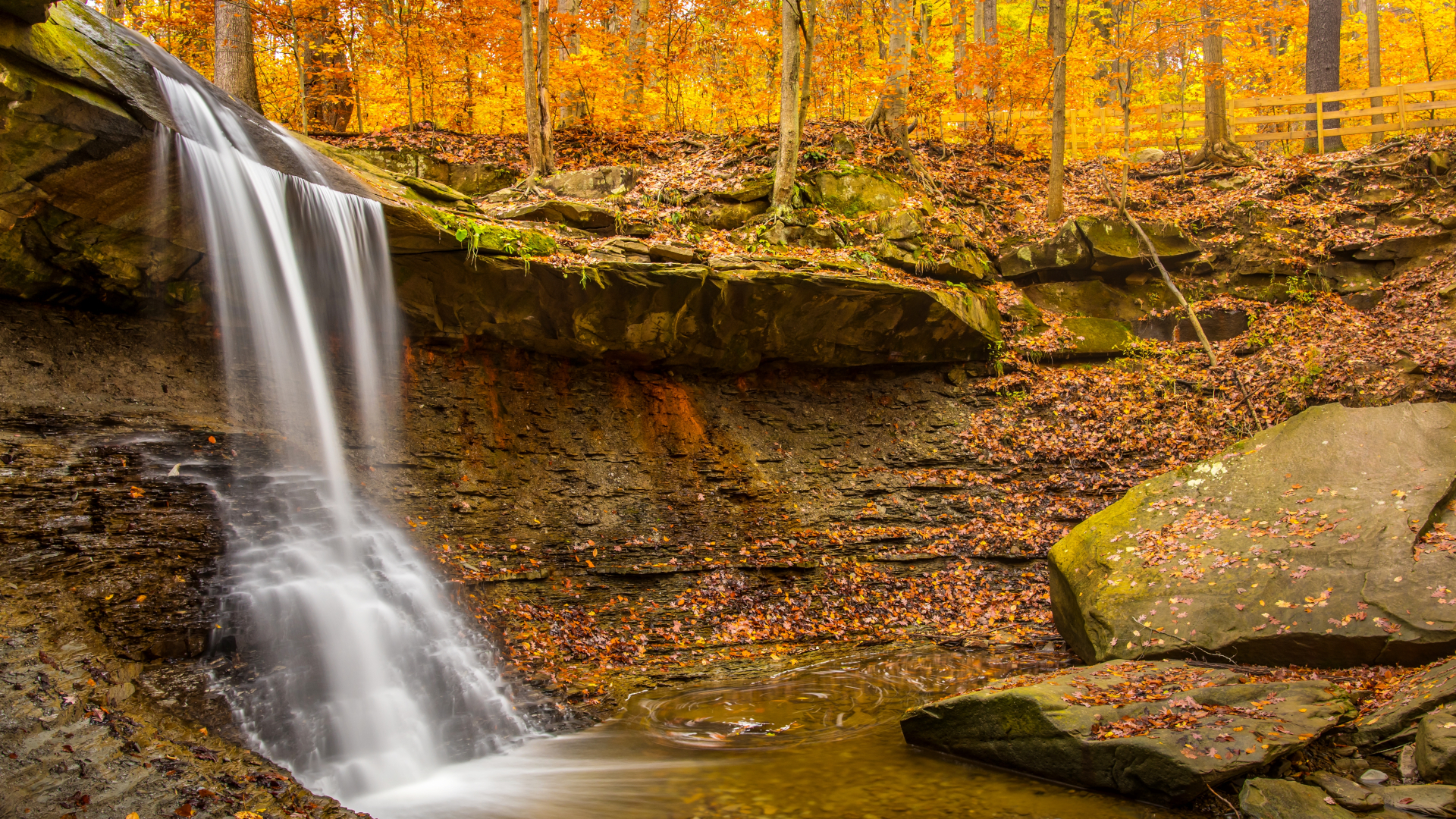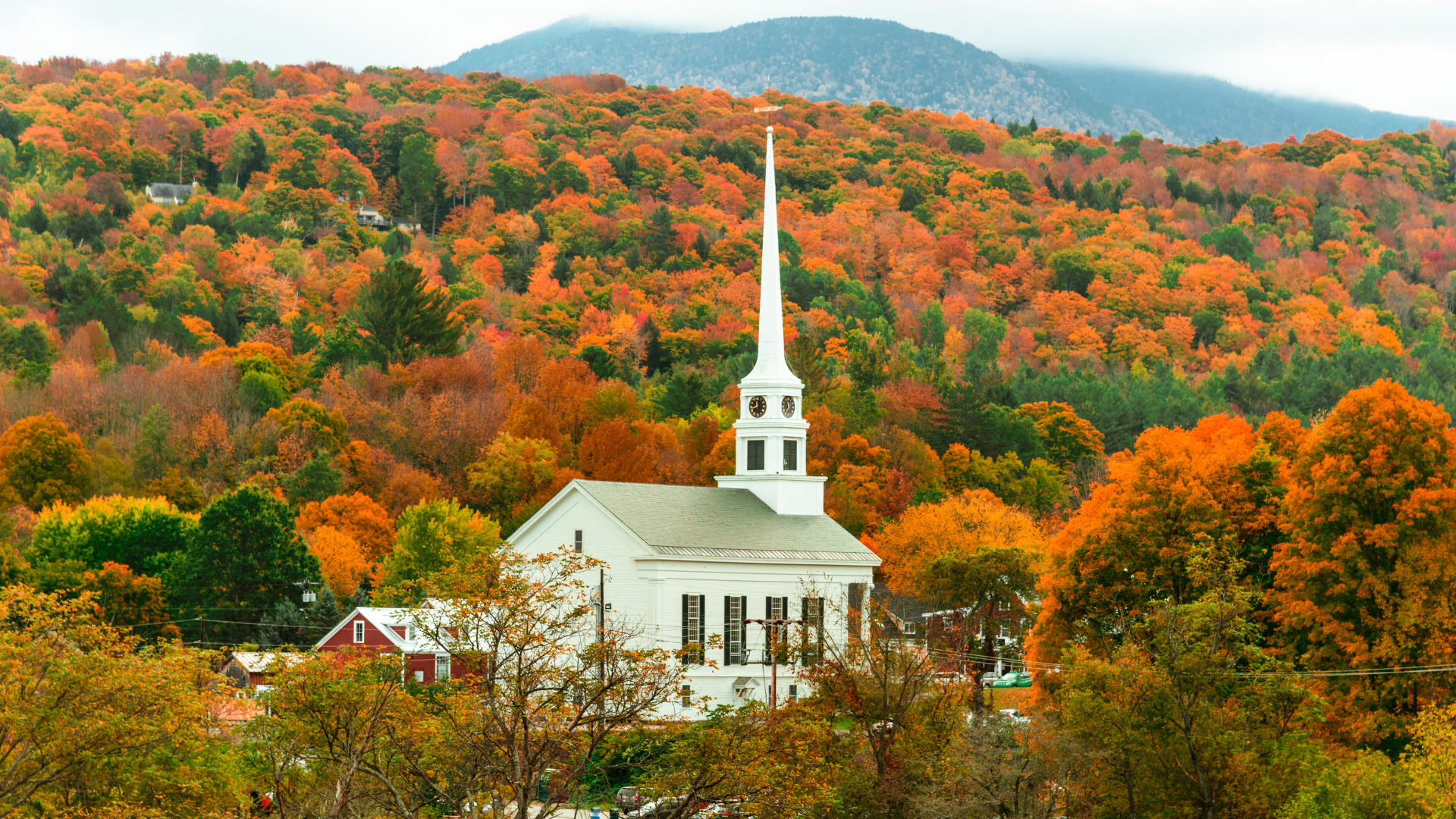12 scenic spots in the US where you can combine April’s solar eclipse with a hike
From National Parks to scenic trails and State Parks, we reveal some of the most beautiful spots to take in this celestial performance

- Texas: totality begins at 1:40 p.m.
- Arkansas: totality begins: 1:51 p.m.
- Missouri: totality begins: 1:56 p.m.
- Indiana: totality begins: 2:02 p.m.
- Illinois: totality begins: 1:59 p.m.
- Ohio: totality begins: 3:13 p.m.
- New York: totality begins: 3:18 p.m.
- Vermont: totality begins: 3:26 p.m.
- Maine: totality begins: 3:32 p.m.
The total solar eclipse taking place on April 8 will be the last one for 20 years, so we know you’re going to want to view it if you live in or near the path of totality. Taking place before the hot weather arrives and in the middle of the day means this eclipse is an excellent event to pair with a hike, so we’ve pulled together some of the top spots to combine celestial viewing with hiking.
A solar eclipse occurs when the moon is positioned between the Earth and the sun, casting a shadow onto our planet. During a total solar eclipse, the sun is fully obscured for several minutes. The most recent total solar eclipse visible in the US took place in 2017, so you might remember it quite vividly, however this one will be the last until 2044, so it’s worth getting outside to experience it.
The path of totality for the upcoming eclipse is approximately 115 miles wide and stretches through 15 states from Texas to Maine so while residents of western mountain states are getting left out this time, an estimated 32 million people from Mexico to Canada will be able to view it without traveling.
When viewing a total solar eclipse, it's vital to protect your eyes with solar eclipse glasses that meet certain safety standards; sunglasses are not adequate. Look for glasses marked with "ISO," which stands for the International Organization for Standardization. Further, it's important that your glasses aren't damaged in any way, so don't be tempted to pull out an old pair you've had kicking around at the bottom of your hiking backpack since the last eclipse. We highly recommend you pick up a pack of these top-rated eclipse-viewing glasses on Amazon before they sell out.

Remember that the further north you go, the more likely you are to experience winter conditions in early April so you may want to stick to lower elevation trails. Dress in hiking layers with a base layer, mid layer such as a fleece and a waterproof jacket. Carry traction devices for hiking and bring trekking poles in case you experience snow or ice on the trails.
Without further ado, if you want to get off the beaten track and enjoy the eclipse in nature, grab your hiking boots and check out our top recommendations for scenic sites where you can hiking while viewing the eclipse, plus what time to have your glasses on for the big show in each state.
Texas: totality begins at 1:40 p.m.
Amistad National Recreation Area
Described by the NPS as “an oasis in the desert,” this park on the border with Mexico has several easy lakeside trails that the whole family can enjoy.
All the latest inspiration, tips and guides to help you plan your next Advnture!
Garner State Park
Closer to San Antonio, Garner State Park on the banks of the frio river al but promises clear skies as well as hiking opportunities, plus they’ll have a Solar Eclipse village set up.
Arkansas: totality begins: 1:51 p.m.
Hot Springs National Park
With 26 miles of forested hiking trails and ancient thermal hot springs, this National Park promises to be one of the best spots in the country to enjoy the eclipse, and they expect to be busy. Just make sure you get to a good clearing in time for the big event.

Missouri: totality begins: 1:56 p.m.
Lewis and Clark National Historic Trail
Hit the Missouri portion of the Lewis and Clark National Historic Trail which winds through 16 states, including the southeastern section of the state on its 4,900 miles, and you'll find yourself in the path of the eclipse.
Lake Wappapello State Park
Sadly the path of totality doesn’t fall on the Lake of the Ozarks region, but this state park is a popular vacation spot for those who enjoy the water, and you can also enjoy miles of scenic trails around the lake.

Indiana: totality begins: 2:02 p.m.
Lincoln Boyhood National Memorial
The trail here may only be a mile long, but you can view the eclipse while walking on the very same ground Abraham Lincoln did as a youngster down in southwest Indiana. The Lincoln Boyhood Trail connects the Pioneer Cemetery to the Living Historical Farm so bring the family and get a little history with your science lesson.
Illinois: totality begins: 1:59 p.m.
Shawnee National Forest
Spanning 289,000 acres, Shawnee National Forest is nestled between the Ohio and Mississippi rivers providing a spectacular backdrop for eclipse viewing with oak-hickory forests, wetlands, canyons, razorback ridges and other unique geological features. There are miles of hiking trails, plus campgrounds and even dispersed camping opportunities so bring your tent.
Ohio: totality begins: 3:13 p.m.
Cuyahoga Valley National Park
The state may not be widely known for its hiking opportunities, but serendipitously, the path of totality covers Ohio’s Cuyahoga, a free-to-enter National Park where you’ll find a natural oasis sandwiched between Akron and Cleveland with 125 miles of hiking trails along rolling hills, lush forests and scenic waterfalls.

New York: totality begins: 3:18 p.m.
The Adirondacks
The Adirondack Mountains form a massif in Northeastern New York in a circular dome approximately 160 miles wide and covering an area of about 5,000 square miles. With more than 100 peaks, including the highest point in New York (Mount Marcy) the area makes a popular hiking destination, though with springtime conditions it may be safer to stay lower. The area is studded with lakes, and many eclipse viewers will be heading to Lake Placid.
Vermont: totality begins: 3:26 p.m.
Stowe
Northern Vermont lies in the path of totality which means you’re spoiled for choice when it comes to scenic hiking spots from which to view the eclipse and the iconic ski town of Stowe makes an excellent choice. Depending on the snow, the resort itself may still be open for skiing and if there’s plenty of snow, you can stay low or get your snowshoes on and explore the trails on Mount Mansfield or in Smugger’s Notch State Park.

Maine: totality begins: 3:32 p.m.
The Appalachian Trail
That’s right, you can enjoy the total eclipse from America’s most iconic hiking trail. Whether you’re a thru-hiker getting an early start or just want to do a day hike on this National Scenic Trail, you’ll be able to enjoy this spectacular event from the Appalachian Trail.
Katahdin Woods and Waters National Monument
Mount Katahdin itself will be snow and ice-covered in early April, but this National Monument has over 50 miles of trails in Maine’s rugged wilderness with views of Katahdin. You may need snowshoes and you’ll definitely want a GPS device for navigation, but this is an excellent choice for adventurous types.
Julia Clarke is a staff writer for Advnture.com and the author of the book Restorative Yoga for Beginners. She loves to explore mountains on foot, bike, skis and belay and then recover on the the yoga mat. Julia graduated with a degree in journalism in 2004 and spent eight years working as a radio presenter in Kansas City, Vermont, Boston and New York City before discovering the joys of the Rocky Mountains. She then detoured west to Colorado and enjoyed 11 years teaching yoga in Vail before returning to her hometown of Glasgow, Scotland in 2020 to focus on family and writing.

